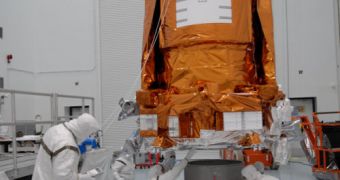Officials at the American space agency say that their planet-hunting telescope has experienced a sudden “safe mode” event recently, during a planned communications sessions scheduled for March 14.
As experts were trying to contact the Kepler Space Telescope in the Sun's orbit, the spacecraft experienced a glitch that triggered the initiation of an automated safety response. This mode is meant to prevent further damage from befalling the telescope's systems.
Whenever things go wrong on space probes, they go in safe mode, shutting down their primary instruments and auxiliary systems. Everything except steering, heating and propulsion goes.
Meanwhile, on Earth, mission controllers work to assess the nature of the damage. They then write lines of code meant to address the issue, and upload them into space. Generally, this does the trick.
This is exactly what's going on right now. Scientists with the NASA Ames Research Center (ARC) are currently working towards identifying why Kepler – the only telescope created specifically for discovering exoplanets – went offline.
The ARC team took over management of the observatory from experts at the NASA Jet Propulsion Laboratory (JPL), in Pasadena, two years ago. It now says that Kepler has switched to its backup subsystem interface box (SIB).
SIB is an electronic component in its systems that is in charge of regulating the way electricity is distributed throughout the spacecraft's other systems. ARC scientists say that a command they sent from Earth may have been responsible for the glitch.
During this communications session, experts were trying to implement a firmware update. This required resetting the network interface card (NIC) on Kepler via a code line. The NIC is responsible for supporting SIB operations.
When the reset command was uploaded, the system went offline, and the spacecraft entered safe mode, immediately shutting down its photometer. This is its primary science instrument, used to calculate slight variations in the brightness of distant stars.
After the safe mode event occurred, the team revised the telemetry they got from Kepler, and determined that all primary and secondary systems were healthy and operational. The experts were then able to re initiate power flow to the primary SIB.
Though Kepler is fine, ARC mission controllers have yet to give their go-ahead for restarting the spacecraft. They are currently waiting on the results of an in-depth analysis, that may determine additional problems on the observatory, Space Fellowship reports.

 14 DAY TRIAL //
14 DAY TRIAL //